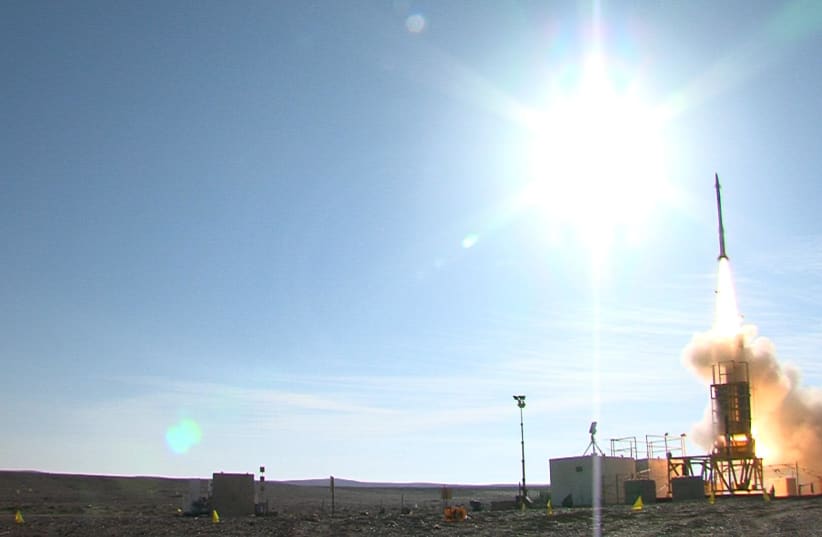According to those reports, Israel has had the Jericho in its arsenal for decades, with the most recent Jericho-3 entering service in 2011. Israel is reported to be working on the Jericho-4.With a multi-layered aerial defense – which includes the Iron Dome, Arrow and David’s Sling – missile system tests such as these are not uncommon. Rocket propulsion systems are designed to launch large systems such as satellites, ballistic missiles and large ground to air missiles.Israel’s air defenses currently include the Iron Dome, designed to shoot down short-range rockets and the Arrow system, which intercepts ballistic missiles outside of the Earth’s atmosphere. The David’s Sling missile defense system is designed to intercept tactical ballistic missiles and medium- to long-range rockets, as well as cruise missiles fired at ranges between 40 to 300 km.The advanced systems are intended to provide Israel with a comprehensive umbrella able to counter threats posed by both short and mid-range missiles used by terrorist groups in Gaza and Lebanon, as well as the threat posed by more sophisticated long-range Iranian ballistic missiles.The test comes as tensions remain high over concerns that Iran is continuing to entrench itself across the Middle East and has breached a number of commitments in the 2015 Joint Comprehensive Plan of Action (JCPOA.).On Thursday, several European countries accused Iran of developing ballistic missiles capable of carrying nuclear weapons such as the Shahab-3 in violation of the JCPOA, and the United States is reported to be considering sending thousands of additional troops to the Middle East.On Wednesday, a top Pentagon official was quoted as saying that Washington continues to see “indications” that Iranian aggression could occur. On Thursday, the US announced that a “significant cache” of suspected guided missile parts was headed to Houthi rebels in Yemen - including disassembled parts for anti-ship cruise missiles, land-attack cruise missiles, air defense missiles and anti-tank missiles.Iran has several rockets which could reach Israeli territory, including the Khoramshahr 2 with a range of up to 2,000 km. and the Shahab-3.Prime Minister Benjamin Netanyahu has warned that Iran is working to develop precision-guided missiles that can hit any target in Israel within 5-10 meters and has been entrenching in bases in Iraq, Syria, Lebanon and Yemen to attack Israel with precision-guided missiles.#Israel’s Defense Ministry has announced that it conducted a missile propulsion system test from base in central Israel this morning pic.twitter.com/8bWZEY2CwW
— Anna Ahronheim (@AAhronheim) December 6, 2019
IDF tests rocket propulsion system
The test comes as tensions remain high with Iran.
